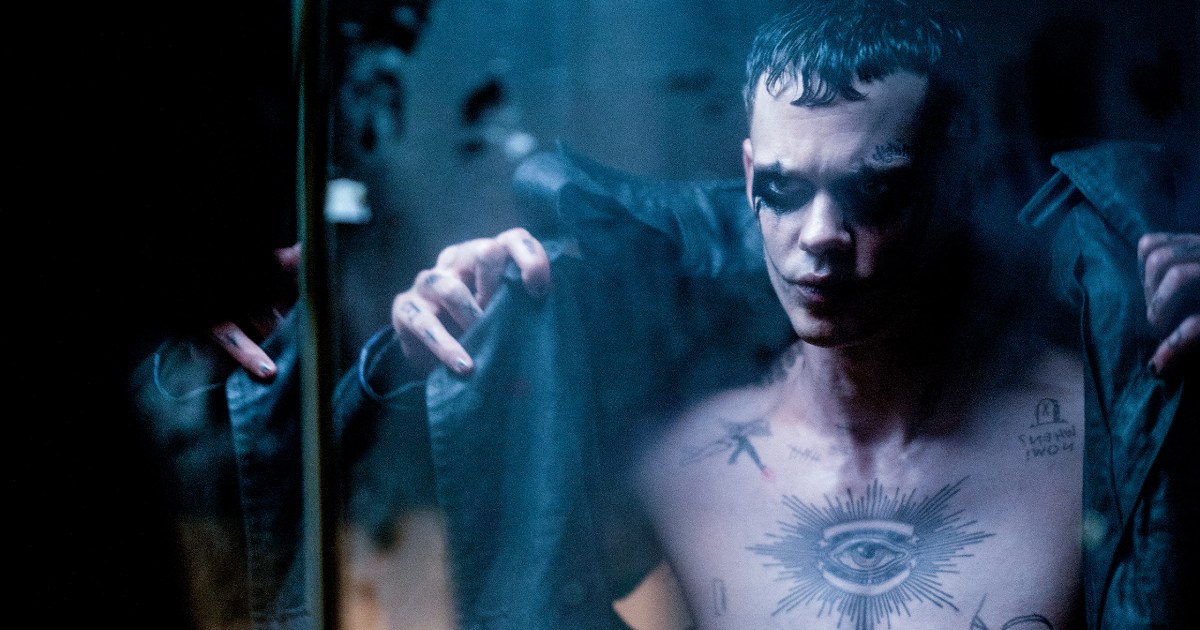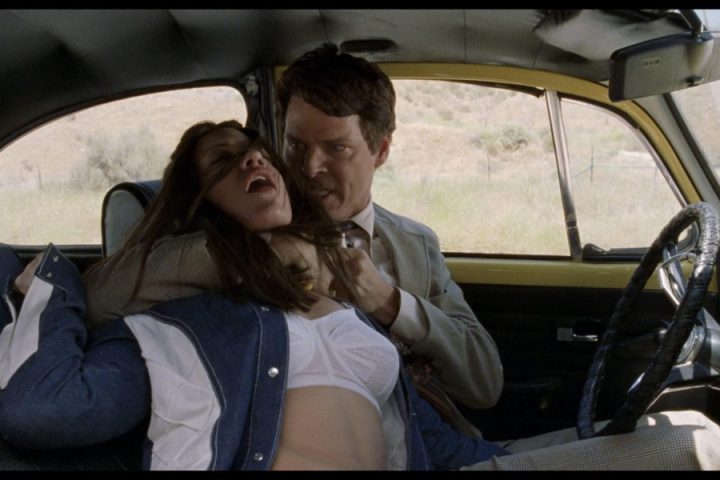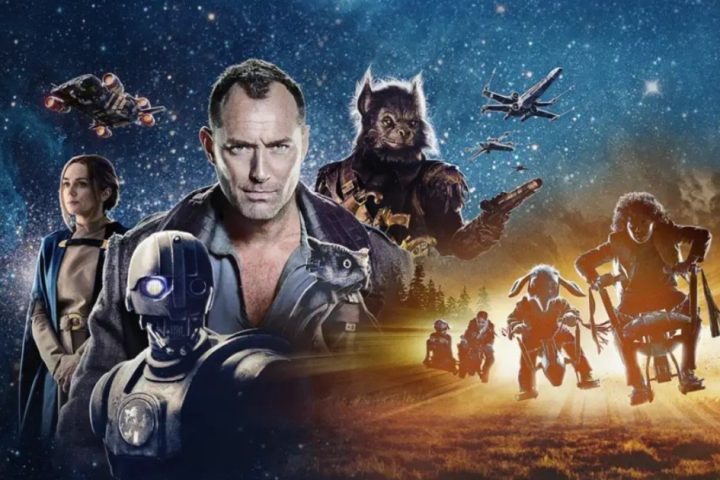James O’Barr’s iconic The Crow comic miniseries is a poignant tale of love, loss, and grief. So, it’s a bit disconcerting when, just half an hour into the latest film adaptation, you find yourself wishing for the swift demise of the two main characters. Directed by Rupert Sanders (Snow White and the Huntsman), the most significant loss you might feel is the 111 minutes you could have spent elsewhere.
The 1994 film adaptation of The Crow is the epitome of ’90s goth cinema. Its legacy is further cemented by the tragic on-set death of its star, Brandon Lee, who was accidentally shot by a misloaded gun. Despite its enduring popularity and merchandise sales, the franchise has struggled to replicate the success of the original film.

Theoretically, The Crow is a flexible franchise — its heroes are one-off avenging spirits, and anyone can become a Crow. This concept worked well in the comics, but failed to translate onscreen. Perhaps that’s why the latest adaptation, which has been in development for nearly two decades, attempts to return to the original character, Eric Draven, albeit with less fidelity to the source material.
It Can’t Reign All the Time
Let’s be honest, a more faithful remake of the comic and movie was already attempted with the TV series The Crow: Stairway to Heaven. But trust us, you really don’t want to watch it, no matter how much you might like Mark Dacascos.
Instead of immersing us in a dark, industrial dystopia, the new Crow starts in broad daylight on a farm. Young Eric learns about loss when he finds a white horse trapped in barbed wire. His attempt to free it results in a downward spiral that lands him in rehab. Or maybe it’s just a dream. Who knows?

In rehab, adult Eric (Bill Skarsgard) meets Shelly (FKA Twigs), who is there after being caught with drugs while fleeing potential assassins. They connect over his poetry and drawings, break out, indulge in sex, drugs, and alcohol, defying every piece of advice from their addiction counselors. This time, a reprimand from the insufferable Dr. Drew Pinsky might actually be warranted.
I Said No, No, No
In the original comics and film, the tragedy of Eric and Shelly is that they’re random victims of degenerate criminals. Here, they’re portrayed as strung-out convicts on the run, the kind of people you might shoot at if they were trespassing. As we learn more about Shelly’s past, this becomes even more apparent. She’s deeply involved with a Faustian immortal soul vampire named Roeg (Danny Huston), who corrupts innocents and sends them to Hell in his place. A lot of exposition seems to have been left on the cutting room floor that might better explain their dynamic, or why Roeg is obsessed with classical music.
Unlike the recent Time Bandits TV series, The Crow now offers Eric a chance to reverse his and Shelly’s eventual murders, which is a fundamental betrayal of the source material. In a purgatory that looks like infinite empty railroad bridges, Eric is guided by an older man who may or may not be a previous Crow; this feels more like a lift from the early issues of Spawn, which was at least partly riffing on The Crow to begin with.

Wick-ed Prayer
Sanders seems to have borrowed as much from the John Wick aesthetic as his predecessor Alex Proyas did from Tim Burton’s Batman, but there’s less of a point to it. “R-rated Batman” was pushing beyond the limits of what had been done; “R-rated John Wick” is just John Wick. To Sanders’ credit, the action moments are the highlights of the movie, with Eric initially more or less incompetent at fighting, but just very good at not dying, as his wounds cause him maximum pain despite their ability to heal. Like a video game character, he can sustain enough damage to be sent back to purgatory and start again; by the time he’s fully leveled up for an opera house massacre, the gore is as excessive and hilariously cathartic as in any good slasher.
Sanders also knows when to deliver a needle drop, though the soundtrack is hardly as memorable this go-around. Joy Division, Enya, and Gary Numan bring the retro vibes, with bands like Traitrs and Landr bringing the new.
As for the actual crow that brought back Eric’s soul, it barely interacts with him, just flying vaguely in the direction he’s supposed to go. There’s no camaraderie there, which feels particularly odd for a guy whose first murdered “loved one” was apparently a horse. Then again, the crow looks to have been added in post, so it’s hard to blame Skarsgard for not noticing it.

Burn
There have been so many swings on this project, with everyone from Mark Wahlberg to Tom Hiddleston and Jason Momoa attached, that it’s easy to suspect a “too many cooks” approach ruined what could have been a fruitful franchise restarter. In comics, The Crow: Flesh and Blood, which featured a resurrected indigenous federal officer who was pregnant at the time of her death made for one of many stellar sequels; a script based on that and written for Amber Midthunder could have been a license to print money. Instead, we get Eric Draven in name only. Skarsgard does his best with this poorly fleshed-out junkie poet, but everything else betrays him.
And it’s not like we don’t know the answer to this, but why — in a universe where it’s proven that Satan and Hell are actually real — does nobody ever mention Jesus? Regardless of one’s faith or lack thereof, it only makes sense that when a mythological demon turns out to verifiably exist, one might consider calling on his traditional foe for help.
Sanders’ Ghost in the Shell remake was underrated, unfairly tarred as whitewashing when its story was pointedly a critique of same, but that’s not the case here. This Crow will be overrated if anyone remembers it at all. After all these years of talk, it might have been bound to disappoint, but even in a world where Brandon Lee’s original never existed, it still would have done so.
Grade: 1.5/5
The Crow opens in theaters on Friday, August 23.







![Stephen King’s ‘Hearts in Suspension’ Addresses Persistent Echoes of the Past [The Losers’ Club Podcast]](http://hypernovapress.com/wp-content/uploads/2024/08/6320-hearts-in-suspension-stephen-king.jpg)